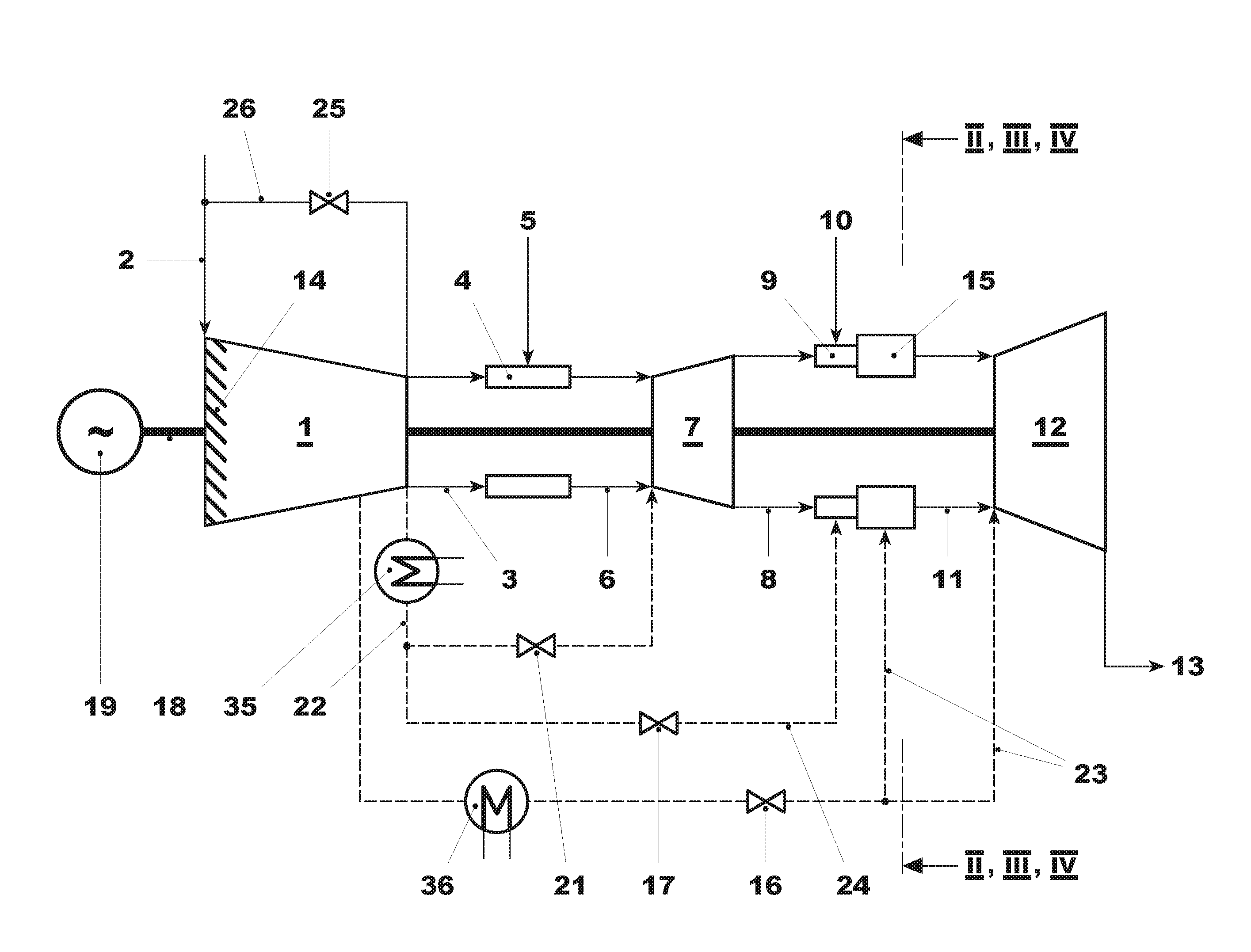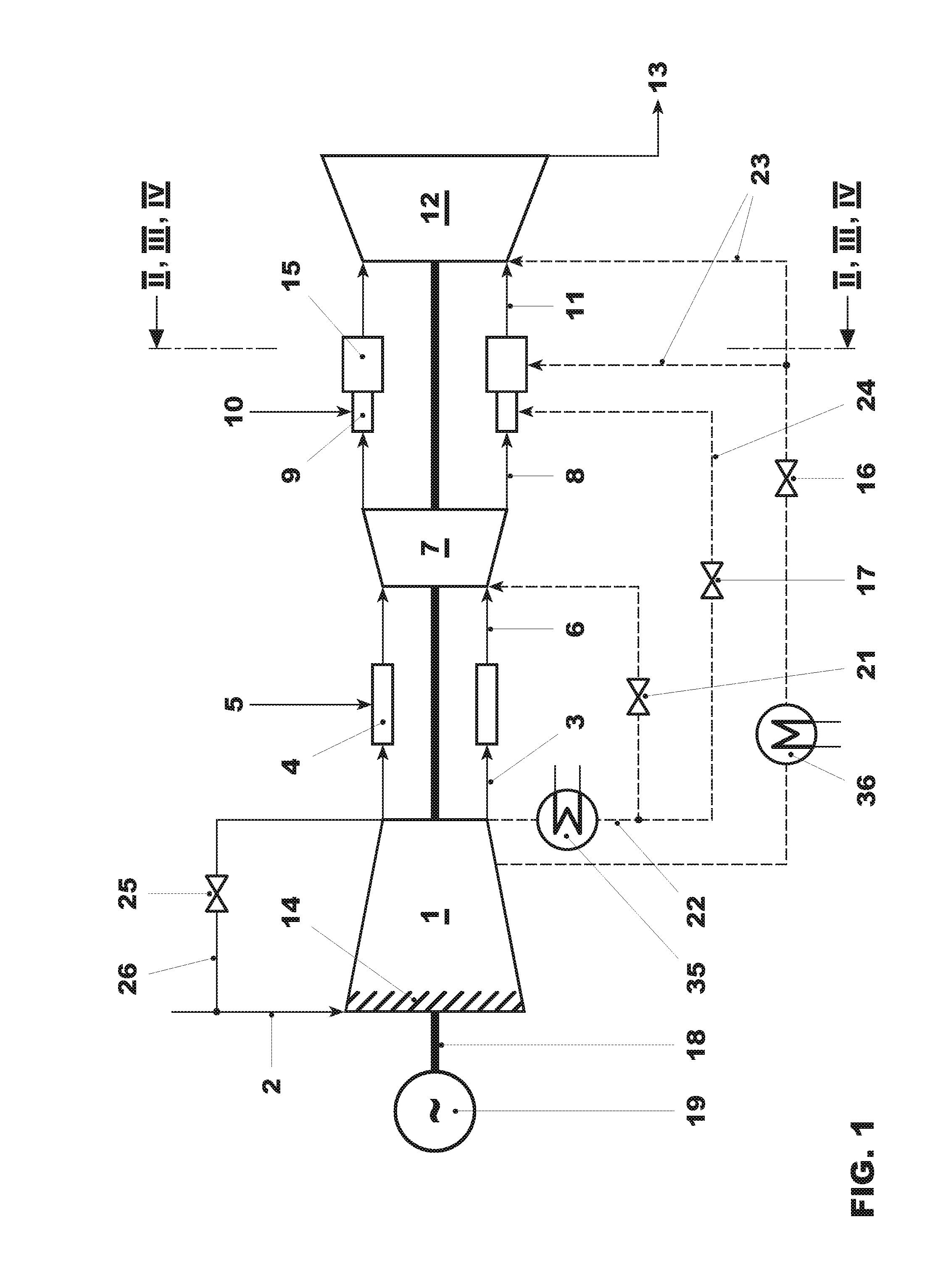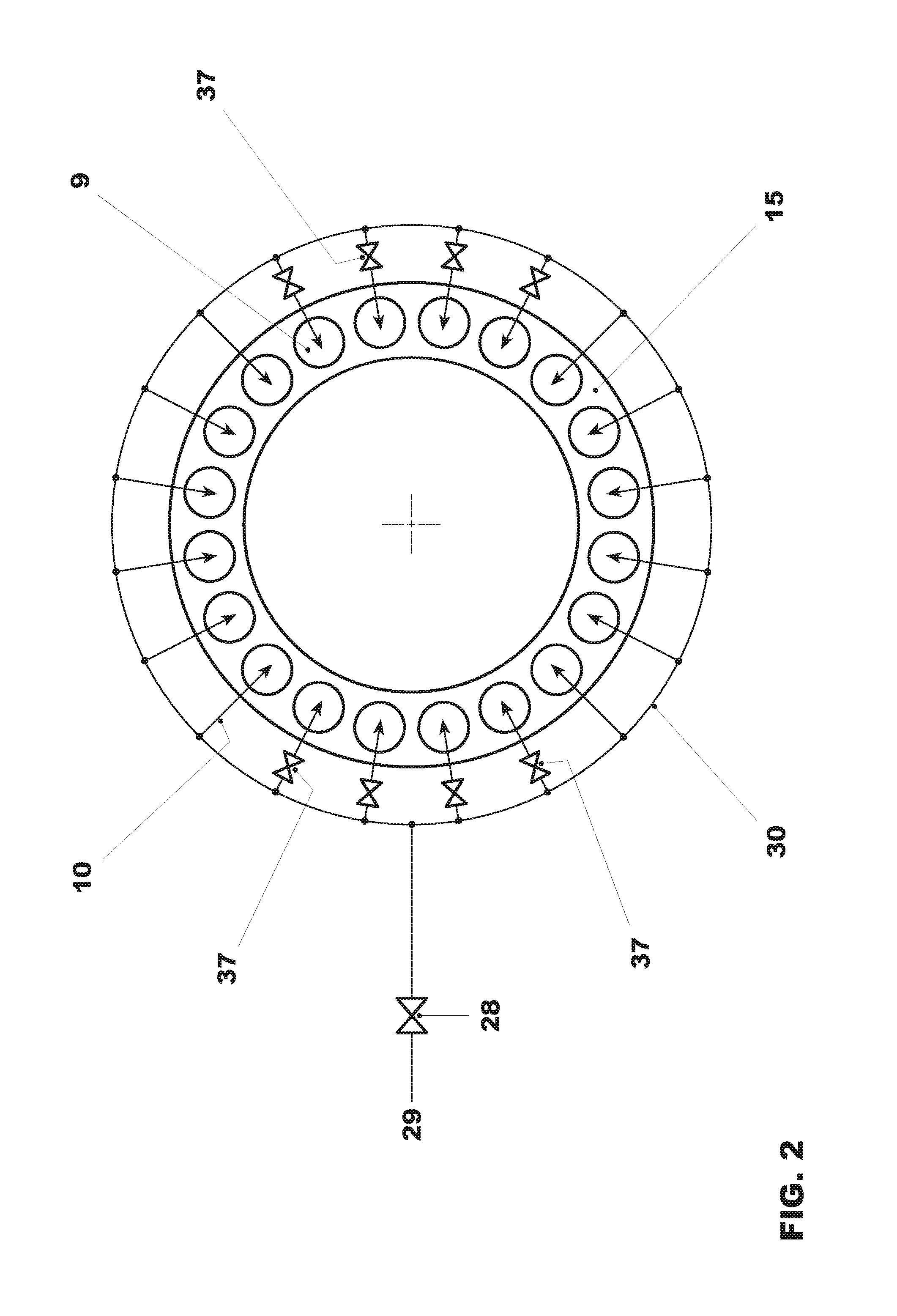Gas turbine with improved part load emissions behavior
a gas turbine and emission behavior technology, applied in the direction of turbine/propulsion engine ignition, combustion control, lighting and heating apparatus, etc., can solve the problems of high co (carbon monoxide) emissions, the possibility of running for longer operating periods at low part load is increasingly also required, and the operation of longer periods at low part load cannot be realized, so as to achieve high fuel flow rate and high maximum air ratio max
- Summary
- Abstract
- Description
- Claims
- Application Information
AI Technical Summary
Benefits of technology
Problems solved by technology
Method used
Image
Examples
Embodiment Construction
[0072]FIG. 1 shows a gas turbine with sequential combustion useful for implementing methods as described herein. The gas turbine includes a compressor 1, a first combustor 4, a first turbine 7, a second combustor 15, and a second turbine 12. Typically, it includes a generator 19 which, at the cold end of the gas turbine, that is to say at the compressor 1, is coupled to a shaft 18 of the gas turbine.
[0073]A fuel, gas, or oil is introduced via a fuel feed 5 into the first combustor 4, mixed with air which is compressed in the compressor 1, and combusted. The hot gases 6 are partially expanded in the subsequent first turbine 7, performing work.
[0074]As soon as the second combustor is in operation, additional fuel, via a fuel feed 10, is added to the partially expanded gases 8 in burners 9 of the second combustor 15 and combusted in the second combustor 15. The hot gases 11 are expanded in the subsequent second turbine 12, performing work. The exhaust gases 13 can be beneficially fed t...
PUM
 Login to View More
Login to View More Abstract
Description
Claims
Application Information
 Login to View More
Login to View More - R&D
- Intellectual Property
- Life Sciences
- Materials
- Tech Scout
- Unparalleled Data Quality
- Higher Quality Content
- 60% Fewer Hallucinations
Browse by: Latest US Patents, China's latest patents, Technical Efficacy Thesaurus, Application Domain, Technology Topic, Popular Technical Reports.
© 2025 PatSnap. All rights reserved.Legal|Privacy policy|Modern Slavery Act Transparency Statement|Sitemap|About US| Contact US: help@patsnap.com



